#corkcitylibraries
Text
Goad Plans of Cork City!

The dedicated Cork City Libraries Local History website, Cork Past and Present, has recently had an interesting addition made in the shape of Insurance plans for the commercial heart of the City. The wide selection of maps details the changing landscape and businesses that filled the city centre from 1897 to 1961!
Cork City Libraries hold copies of seventeen editions of the Goad plans for Cork City, from 1897 to 1961. These are held in five bindings in our Local Studies and Learning Department. The ‘key plan’ on the first sheet of each edition provides a graphic outline of areas represented in more detail on maps 2-16 of each edition. Under the key plan (in PDF form in these webpages), a selective index of streets, buildings, and firms is included. The scale of the detailed plans is one inch to forty feet (1:480) on the original paper copies. Fire insurance plans were first drawn up in the late eighteenth century to provide risk information to fire insurance underwriters.

Charles Edward Goad, born in Surrey in 1848, moved to Canada in 1869, where he became a renowned cartographer and railway engineer. The firm of Charles E. Goad was established in Montreal in 1875 and became the leading producer of fire insurance plans for 1,300 places in Canada, before he returned to Britain in 1885 to produce insurance plans for the commercial sections of more than 100 towns in Britain and Ireland, along with surveying places in other countries.
Fire insurance companies had an interest in preventing fires to insured properties, and firefighters (often private) needed detailed information regarding access to water, routes to building, room arrangements, locations of doors & windows, thickness of walls, information on construction materials, type of roof, locations of combustible materials, water-works system, etc. Charles Goad died in Toronto in 1910. Goad insurance plans now provide an excellent information source for historians, geographers, architects, environmentalists and genealogists.
2 notes
·
View notes
Text
Cork Libraries October Events
October is a busy month for Cork City Libraries! It’s Halloween, Health Literacy Month and the Children’s Book Festival!

This year the Children’s Book Festival is taking place online, so check out our webpage for lots of content and videos from our panel of amazing authors. There’s creative writing exercises and workshops, how-to-make Harry Potter bookmarks, how-to-make your own zine, and lots more!
Cork City Children’s Book Festival

It’s Health Literacy month’s 20th anniversary, and it is more important than ever this year as the world struggles with the Covid 19 pandemic. The CorkCityLibraries tumblr article states that “the importance of Health Literacy is realised in its outcomes; the individual making healthy decisions and acting in a healthy way for the benefit of themselves and their wider community”. Read the article in full through the link below.
Health Literacy: What Is It?

Why not spend this Halloween curled up with a bag of Halloween sweets and a stack of suitably scary books from your library? As a librarian with a love of the horror genre (be it book, movie or video game), here are some of my own favourite horror books (in no particular order) for your consideration...
“Through the Woods” by Emily Carroll
“Misery” by Stephen King
“Let The Right One In” by John Ajvide Lindqvist
“Coraline” by Neil Gaiman
“The Spooks Apprentice” by Joseph Delaney
“Gyo” and “Uzumaki” by Junji Ito
“The Gashlycrumb Tinies” by Edward Gorey
“The Shadow Over Innsmouth” by H.P. Lovecraft
“The Promised Neverland” by Kaiu Shirai and Posuka Demizu
“Cirque du Freak” and “Lord Loss” by Darren Shan
2 notes
·
View notes
Photo
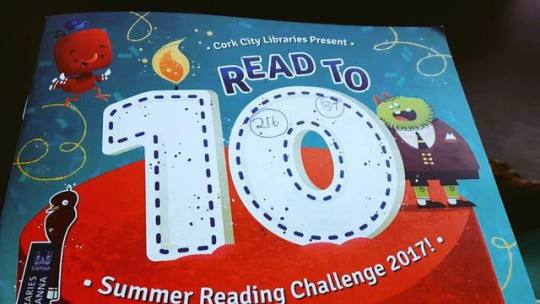
#corkcitylibraries #SummerReadingChallenge #keepingkidsreading
0 notes
Photo
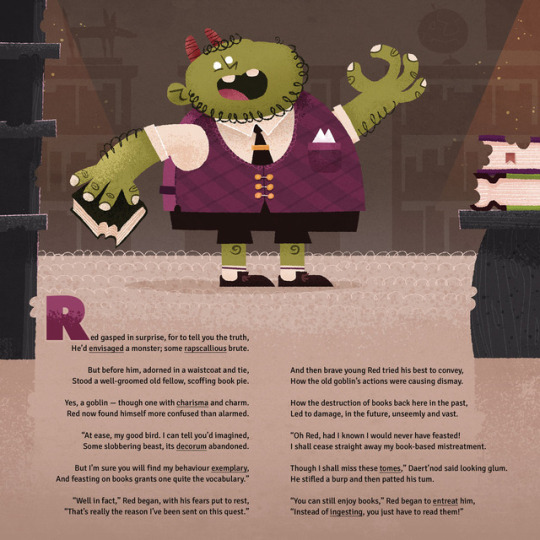
READ TO TEN
Page 6 of the story from @corkcitylibraries Summer Reading Challenge 2017 for kids. View the project in full here: https://www.behance.net/gallery/54378799/Read-To-Ten
#illustration#writing#Character Design#graphic design#poetry#rhyme#lettering#typography#reading#books#ireland#library#cork city library#birthday#summer#kids#freelance#summer reading#red#mascot#goblin#ReadToTen#CorkSummerReading#artists on tumblr#illustrators on tumblr#writers on tumblr
4 notes
·
View notes
Photo

RT @corkcitylibrary: https://t.co/wGKPHQmFMP 2PLAN22 http://twitter.com/2PLAN22/status/854070491010789379
https://t.co/wGKPHQmFMP
— Cork City Libraries (@corkcitylibrary) April 17, 2017
0 notes
Text
Cork City Libraries Sustainability Blog | Sow…Let’s Grow!

I was fortunate enough to attend a gardening course at the end of June, with the intention that it would contribute to my work with the Hollyhill Seed Library and this blog. Although the day itself was wet and miserable, and the arrival of the promised sandwiches never materialised, I thoroughly enjoyed myself and my head was spinning with the amount of information that was being imparted upon us. The lady who was running the course, Aoife Munn, was a fountain of knowledge and I would highly recommend checking out one of her talks if she ever pops up in your area.
She initially spoke about the importance of pollinator plants. In a study conducted by the Botanical Society of Britain and Ireland it was found that our native plants have declined by 56% since the 1950s which is a terrifying statistic. Plants have evolved over millions of years to adapt to their surroundings, including their ability to attract pollinators specific to that area. Given that we have lost over half of our native plants it’s not a big jump to assume that our native bees and other pollinators must be really struggling in the changing landscape. Something we can do as gardeners to alleviate that struggle is to plant native pollinators. Sometimes you don’t even have to plant anything, if you just let a patch of land grow wild you will be amazed at what will grow there.

Plants such as dandelions, oxeye daisy, clover and knapweed will all appear in your garden given the space and the time. Foxglove, primrose, cornflowers, and marsh marigold are all native Irish plants and great pollinators too, so it’s a double win! A plant that she also suggested that I’d never considered before was the humble ivy. Ivy keeps its foliage all year round, it flowers when very little else does and its berries are a wonderful food for birds during the chilly winter months. Other fantastic pollinators include snowdrop, crocus, comfrey, wallflower, hellebores, and alliums.
Aoife also showed us how to make biodegradable pots for seedlings or for plants that need an extra bit of support indoors before they can be planted out. To make your own pot all you need is a couple of sheets of newspaper and a plastic bottle, a 250ml bottle is a perfect size. Fold the newspaper sheet in half horizontally, with the closed end towards you and the open end facing away. Put the plastic bottle at the start of the newspaper, making sure the open end is also facing the open end of the newspaper and roll the newspaper around the bottle. Stuff the paper into the opening of the bottle and then take the bottle out and put it back in, bottom end first so it can squash down the newspaper. This will degrade much faster than a toilet roll tube and repurposes items that would traditionally have ended up in the bin.

In other gardening news I ate my first radish this week and it was one that I had grown myself! I borrowed the seeds from the Hollyhill Seed Library, planted the seeds in the bottom of the pot that my peas were in and hey presto, a couple of weeks later I have lots of lovely crunchy little radishes. Another vegetable that is ready to eat is rainbow chard. Although not fully grown yet, the baby leaves are perfectly edible and pinching them out now gives the remaining leaves space to grow. Using my baby rainbow chard leaves and the radish I grew, I made a lovely peanut satay and it’s safe to say that nothing beats the taste of freshly grown veg!
2 notes
·
View notes
Text
Echoes of our Past | February 3rd 1923
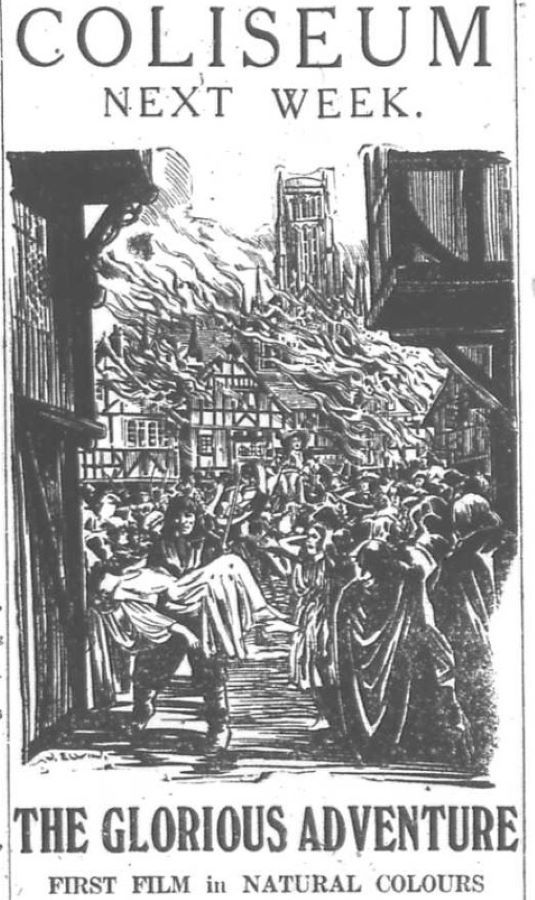
Librarian Richard Forrest takes a look at news highlights published in The Echo 100 years ago this week.
Attack at Dunkettle
During the night there was an attack on the military guard at Dunkettle Station, three miles east of the city. It was beaten off without much difficulty. During the skirmish a bullet entered the signal cabin through a window and damaged some instruments. The wires on the line to Youghal were also cut during the night and, as a result, the down trains this morning were delayed for about three hours.
Cork District Sessions
This morning, before Mr. D.B. Sullivan B.L. Denis Leary, 4 James Street, was charged with having been drunk and disorderly in Parnell Place last night. The disorderly conduct was that he made use of bad language outside a public house door. Defendant said he had come out of hospital only that day and that his head “was not very good”. Cornelius Cooney, an ex-soldier, was charged by Patrolman Moore with having been drunk and incapable on Half Moon Street at 1 a.m. this morning. Cooney said he had been wounded in the head and that whenever he took a pint or two he staggered. Defendant was lying on the footpath asleep. Both defendants paid fines at once and were discharged.
A Deserving Charity
A appeal will be held next Sunday for St. Mary Magdalen’s charity and a charity sermon will be preached at the North Cathedral by the Rev. J. Aherne. This charity is worthy of the best support of the citizens. Collections will be held in all churches. It is to be hoped that a generous response will be forthcoming. There are over a hundred penitents to be maintained and funds are very scarce. Many subscriptions will be needed if it is to continue its magnificent work.
Joint Hospitals Board
Three tenders were received for the supply of a motor van. The lowest was that of W.J. Thompson, Mallow for £179 and this was accepted. The others were £188 and £201. A letter was read from the County Technical Committee asking the Board that when it makes appointments in cases where Irish is essential to accept the certificate awarded by them. The application was accepted. On the motion of Mr. O’Connell T.C., seconded by Mr. Golden (Rural District Council), the salary of Miss O’Doherty was increased by £15 a year.
Cork I.D.A. Meeting
Arising out of communication with the Marine Investigation Department, the Secretary informed the meeting that the butter on board the ss. Duchess branded “Lismore Castle Brand” was tested by experts and found to be Irish. As its origin was in dispute the Secretary had communicated with Paxman & Co., Lismore and received the following response, “We received your letter of the 24th and in reply beg to inform you that the 24 keels of butter which were shipped from Liverpool on board the ss. Duchess were Irish butter packed by ourselves. They were in storage in Bootle Cold Stores and we are getting them back for our Irish trade. We have no agent in Liverpool”. In view of the fact that Paxman’s were obliged to ship their butter to Liverpool for cold storage purposes, it was decided to get in touch with the company again and recommend the facilities offered in Cork by the Cork Pure Ice Warehousing and Cold Storage Co.
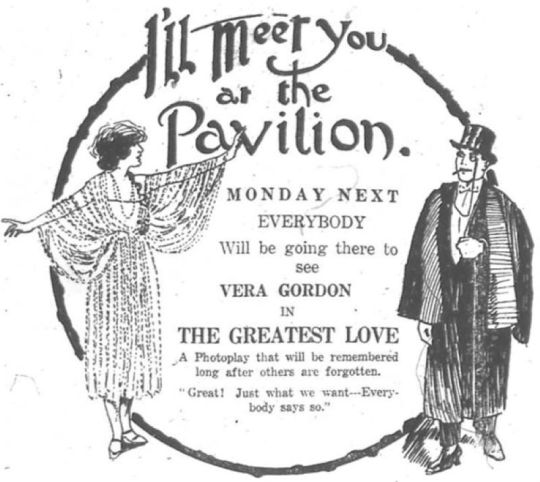
News from Around the World
112 bodies have been recovered so far from the Heinitz Pit near Beuthen, Germany after a violent explosion last Wednesday. It is feared there are still 28 bodies in the mine. Three earthquake tremors have been recorded near Ottawa. The epicentre being 6.5 kilometres away. The third was the most severe and occurred around midnight. There was some excitement in the South African Union House of Assembly caused by the close voting on the Women’s Enfranchisement Bill. It was defeated by 56 votes to 55. Some blame a woman in the gallery for shouting at the Prime Minister. Lord Carnarvon has said at Luxor that the “Ushahtl”, or small image of King Tuttankhamen is probably the finest piece that the sepulchre contains. A dredger turned turtle in the river Humber shortly after leaving the dock at Hull yesterday morning resulting in the loss of six lives.
An Arcadian Cork Ballroom
On a glorious night of light and melody during the week it was my good fortune to breathe the Arcadian atmosphere of a Cork ballroom. The laughter, the beauty, the inspiration. The sylphs who hither and thither floated. All were there. Colour and beauty of form abounded, and the world called Earth seemed far away. The soft, close-clinging garments that wrapped those swaying, slow moving figures attracted only by the beauty of their wearer. The brilliance that shone on hair and throat and delicately draped arm drew only admiration unalloyed. Beneath those bright lights, within the magic region of that sweet music, only one thought was shared, only one aspiration actuated - beauty, happiness. No queryings there concerning wealth or birth. No contemplation upon rank, station, affluence or influence. One objective guided. One inspiration sufficed. Unity of effort completed the perfect whole: “Let joy be unconfined”, and joy was the portion of all.
St. Finbarrs vs. St. Marys
The clash between St. Finbarr’s and St. Mary’s in the Poor Children’s Excursion Fund last Sunday was a strenuous contest throughout. The first half was altogether in the champion’s favour but the second balanced out. St. Mary’s is now a combination of St. Mary’s and Fair Hill players and they finally pulled together in that half though their scoring line let them down rather badly. With more practice and polish the amalgamation will take some beating. The full-time whistle left the Barrs winners by a comfortable margin. W. Aherne, Cork County Board, acted as referee and gave general satisfaction.
2 notes
·
View notes
Text
Echoes of our Past | January 13th 1923

Librarian Richard Forrest takes a look at news highlights published in The Echo 100 years ago this week.
Cork Dockers Meet
The Cork dockers, coal carmen and storemen’s sections of the I.T.G.W.U. (Irish Transport and General Workers Union) met last night at Connolly Hall. The proceedings were protracted and concerned the proposed reduction of one shilling per day for time workers and a pro rata reduction for tonnage workers. It was agreed that a ballot on the issue be taken today. The ballot will close at 7 o’clock this evening and the result is expected to be announced at 9 tonight.
City Robberies Continue
Alarming robberies continue in the city. Buckley’s bedding manufactory on Lavitt’s Quay was entered by armed intruders as the workmen were being paid. Mr. Buckley strongly protested to no avail. Fortunately, some of the men had already received their pay and left. A somewhat mysterious robbery occurred at the G.P.O. last night. The postal side was locked up as usual at about 11 o’clock and everything reported to be in order. But when staff arrived this morning it was found that the safe had been broken into and bundles of £1 and 10 shilling notes amounting to £300 removed. A large amount of silver was left untouched.
Cork Quarter Sessions
Before the Honourable the Recorder of Cork K.C. Cornelius O’Sullivan, 1 Coburg Street, sought to recover the upper part of his house from James O’Sullivan, 1 Coburg Street. The evidence was that both had been tenants at the address to a Mrs. Vaughan. There was some controversy over a cellar which both claimed as part of their letting. Cornelius had since bought the entire premises and sought full possession to accommodate his family. Judgement was reserved.
President’s Residence Burned
Dublin was alarmed this morning by the news that President Cosgrave’s country residence at Rathfarnham has been destroyed by fire. Fortunately, no member of the Cosgrave family was at the residence at the time. For four hours the fire brigade battled with the flames and saved the servants section, the outhouses and much of the furniture. It seems that Republicans effected an entrance into the fine old Georgian mansion in the early hours and sprinkled petrol before initiating the conflagration. They detained a witness passer-by until the fire had gotten a firm hold. A caretaker occupying the lodge sixty yards away knew nothing about the outrage until awakened by the noise of falling masonry.
Sale of Arms
Washington – It is officially announced at the White House that no arms may be sold to any nation or any individual during President Harding’s administration.
Lunatic Asylum for Road Hogs
New York – The possibility of being sent to a lunatic asylum may have the effect of deterring “road hogs” pursuing their dangerous driving. This is the opinion expressed by Judge Charles L. Bartlett of Detroit who recently set a precedent by taking drivers guilty of excessive speed to the morgue to view the bodies of motor accidents. The Judge’s plan is to remand those found guilty for a mental test to be conducted by court appointed psychiatrist.
Viewing Venus
With the sun not rising till after 8 o’clock just now it is worthwhile rising a little earlier to see the planet Venus in all its glory. Epochs of maximum brightness are fairly frequent for Venus. They happen shortly before it reaches inferior conjunction when it dominates the eastern heavens as a morning “star”. Their greatest brilliance occur when the planet and the Earth are both almost at their nearest to the sun. These conditions obtain just now, the Earth making its nearest approach last Wednesday and Venus this Saturday.
Munster vs. Leinster
Munster and Leinster played at the Mardyke this afternoon. Leinster were unchanged but Popham declared off from Munster and was replaced by O’Neill. Munster’s players were selected from Dolphin (6), Constitution (5) and U.C.C. (3). Leinster’s from Trinity College (6), Landsdowne (4), Bective (2), Wanderers (2) and Monkstown (1). Play commenced in good style with Favier making a clever dash to Leinster’s 25 before being pulled down. Cussen cleared. Midfield play followed for some time and Munster were awarded a free for offside but Daly’s kick fell short. The Leinster forwards made a few bursts. A heeled free by Murphy-O’Connor restored play to midfield. A fine passing movement by Leinster was the next feature ending in Cussen scoring. Crichton failed to add the extra points. Splendid footwork from the Munster forwards, Bradley and Sullivan, followed and ended between the posts. O’Connell failed to convert, dashing the ball against the upright. After 20 minutes the score was level at three points each. Leinster pressed hotly for some time and Munster were penalised. A magnificent Munster movement was witnessed when Murphy-O’Connor gained possession, cut through beautifully and sent out to Favier when tackled by Davies. Favier was then pulled down but let the ball loose. Wellwood saved Munster from touch and Sullivan led the forwards to the line, scoring himself from far out. Daly failed to convert. Munster 3 tries (9 points); Leinster 1 goal 1 try (8 points).
1921 All-Ireland Final
A special meeting of the G.A.A. Central Council has fixed the 1921 All-Ireland hurling final between Limerick and Dublin for March 4th at Croke Park. Mr. Walsh, Waterford, to referee. The Council also decided to inaugurate a May 21st carnival in aid of funds.
Ode to the Coal Quay
Were I sublime than the Grecian Rhymer,
Than Philostratus or bold Bonaparte,
Could I when lyrical like Moore, that miracle,
Endow my dialect with tuneful art,
I’d pen a ditty of this fine fair city,
So wise and witty t’would beget renown:
And like thrush or curlew I’d extol that purlieu –
The Coal Quay Market of my native town.
(First of ten verses by W.B. Guinee, one time Cork journalist who moved to London)
2 notes
·
View notes
Text
Cork in Verse | Ana Spehar Interviews Sloane Quirke

Sloane Quirke is an artist from Cork. They’re currently studying drama in Kinsale and have written pieces for the online publication Good Day Cork. They find poetry to be a really good emotional release for them, and it inspires their drawing and acting as well. They love trying lots of different art forms and try their best to have fun with it all.
Besides writing you are an artist and studying drama. How do you manage to fit writing with other demands on your time?
To be honest I do find it difficult to set time aside for writing. I can make time when there’s a deadline on it, I think because there’s someone relying on me getting it done. To fit writing stuff that’s just for myself or my personal projects in though, I find that keeping a notebook on me really helps. I’ll often have random ideas or nice sounding lines pop into my head, and I jot them down in there. Then if I’m ever waiting somewhere with nothing to do, such as on a bus or in a cafe, I’ll take out my notebook and develop those ideas a bit more.
Where do you seek inspiration from? Who are your poetic influences and why?
Most of my inspiration comes from my life, sometimes I’ll have a great experience with something, and I just have to write it out to keep the memory. Sometimes I write to vent, sometimes as an observation on ways that I think or on the world. The vast majority of my writing is about my experiences of being non-binary and navigating the world and all my relationships with people as an autistic person. I am guilty of not reading a whole lot of poetry, but I know this woman, Róisín Taylor, and she wrote a book with her poems. It’s called Mind Full of Memories, and it’s about her travels around the world. I was really inspired by the way she told her story and conveyed her feelings through a series of poems.
Does the creative process of writing affect your mood, and if it does how?
The creative process definitely affects my mood. I very often write to vent so that I’m not keeping emotions and thoughts in me. Writing out what’s going on, whether it’s just a stream of words or a coherent piece of writing, is so useful to help make sense of the messiness that can be in my head. I’ve also found recently that it’s a good way for me to challenge my own thoughts and thought patterns. When I was writing my piece, I’m Choosing To…, I had pages and pages of my thoughts on the topic of binary thinking, and eventually realised so much of it was just me being annoyed. After making that realisation, I started to look at it from a different angle and thought about the beauty and freedom of breaking out of that thinking, while still acknowledging the negatives of being stuck in those binary thought patterns. I would really recommend writing as an emotional release, and it doesn’t have to be good, because nobody else needs to read it ever.
Could you tell us more about your creative process of writing?
I have different processes depending on each project. Sometimes a poem just comes to me in its complete form, in a burst of inspiration and I end up writing it out frantically. Then I go back to it a day or two later and make minimal edits just so it’ll flow better. If I’m writing about a theme, or even about an aspect of my life, I’ll take some time, get some tea or coffee, and write out whatever comes to mind regarding that topic. Once I have some thoughts out, I can look through them and see if there’s anything that could be a good line in a poem. I compile these lines or blocks of writing, write some stuff to link it together, then edit it all to make it sound better when read out loud. I find reading my poetry out loud really helpful, whether it’s just to myself, my dog or a friend. A lot of my thoughts or lines get scrapped from poems, but I try to never fully throw away or delete things, because going back over old work can spark inspiration for new work.
What book would you recommend to our readers?
I have to recommend Inside Out & Back Again by Thanhha Lai. It’s a semi-autobiographical book written in verse about a 10 year old Vietnamese refugee in Alabama in 1975. It follows her escape from Vietnam and her first year in America. The way it’s written conveys the mind of a 10 year old so well, I can’t properly explain it. Some of the poems read almost like diary entries, while others feel like in the moment thoughts and emotions. It’s a really good read, and definitely impacted how I look at storytelling.
“Sun”
If I am the moon, then she is the sun
Without her I could not shine
She brings warmth to the day when there is none
I am forever blessed to call her mine
Her smile lights up any space
And her laugh will always brighten your day
When I see her, she puts a smile on my face
When she is gone, my charm slips away
Every moment is Heaven with her around
And it will stay that way until we are six feet under the ground
“I’m choosing to”
I’m choosing to challenge binary thinking
I’m choosing to take the boxes
That I’ve been forced into
Crammed into dark spaces
Too small and cramped for me
I’m choosing to tear the boxes to pieces
To claw my way out
Until all that remains
Is shredded cardboard
That will be used as kindling
For the fire that is burning in me
Fire
A word that usually brings to mind
Images
Of chaos and destruction
And I choose to challenge that
I choose to not be a raging wildfire
Just growing and burning
Not caring what I destroy
Maybe I’ll be a crackling fire
In a hearth
Growing at the rate of which others give me fuel
Or perhaps a candle
Steady and reliable
Called upon in emergencies
I’m choosing to leave my options open
To maybe jump between forms
Even revisit wildfire if I see fit
And that suits me more
Than that cold, dark box
That I once dwelled in
2 notes
·
View notes
Text
Sow…Let’s Grow
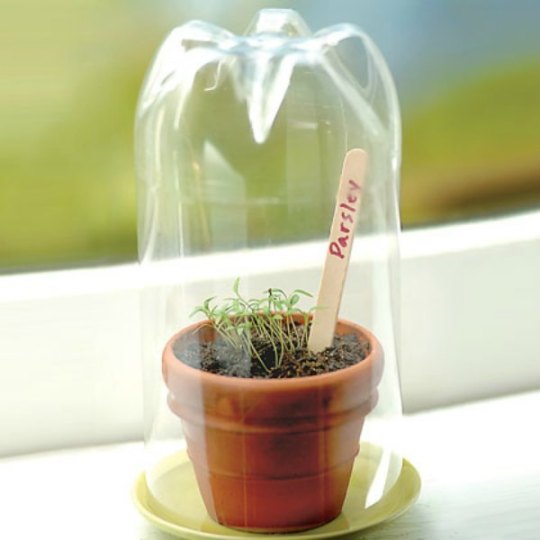
There aren’t enough hours in the day for all the jobs that need to be done in March.
Sunday was my only free day this week and I was determined to get out in the garden to plant some seeds but lo and behold it did not stop raining all day long and so I used the time to go through my seed collection and get all my March sowing seeds ready to go.
Seeds that can be planted in March:
Basil Agapanthus
Broad beans Aquilegia
Carrots Calendula
Coriander Eryngiums
Cress Lupins
Lettuce Nasturtiums
Peas Phacelia
Radishes Sunflowers
Spring onions Sweetpeas
Turnips Wildflowers
Last year I grew basil, carrots, lettuce, peas, and wildflowers. When sowing the carrots and lettuce I chose pots that were much too small and my crop at the end was only big enough to feed a family of mice! The basil, peas and wildflowers, however, did much better. The smell and taste of home grown veg is so satisfying; the fresh aroma of basil could almost convince you that you were living in Southern Italy (almost) and I’m sure I’ve waxed lyrical about the experience of eating freshly picked peas before, but it’s certainly worth mentioning again. If you want to try your hand at growing any of these, why not drop by to Hollyhill Library and have a look through our free Seed Library, we have all the above-mentioned seeds in stock. Members of the library can borrow up to four packets of seeds and groups up to 8 packets at a time, in return all we ask is that when the plant has finished growing, to return a portion of its seed to the library at harvest time. No matter how small the portion every little bit will help to keep this wonderful service going.
This year I’m also going to try and grow coriander and calendula, with hopefully a better result than my carrots and lettuce! Coriander likes a fine and fertile soil so remove all the clumps of earth and stones beforehand. They also have a fairly long root so make sure your pot is over 25cm deep. Scatter the seeds over the top of the soil, 5 to 10 per pot, cover with soil and water well. It will take about 3 weeks to germinate, you can sow coriander all the way through until September, to create a continuous crop.
Calendula is a great starting point for novice gardeners as it requires very little attention and is amazingly easy to grow. Simply pop the seeds exactly where you want them to grow in the garden, they do not need to be grown indoors first or in a greenhouse, and water well. They will flower all year round if we have a mild winter and the flowers are entirely edible. They also make great companion plants in vegetable gardens to attract pollinators and increase the yield of your crops. An all-round winner in my book!
Talking to my mother, another enthusiastic gardener, I was lamenting the fact that I do not have a greenhouse to start my seedlings off in and here is the ingenious solution she came up with – recycle plastic bottles! By cutting them in half and placing the top over a plant pot you are essentially creating a tiny greenhouse, the heat gets trapped under the plastic providing a much better temperature for seeds to germinate and when the seedlings start to appear, transpiration will create droplets of water on the inside of the bottle meaning the seeds water themselves.
Happy gardening!
0 notes
Text
Cork City Libraries Sustainability Blog | Sow…Let’s Grow!
December is the busiest month of the year for many people, from the stress of Christmas shopping to the excitement of finishing school for the little ones, and the all-important winter exams for those in secondary school or college – the garden is the last thought on anyone’s mind...or is it? The garden doesn’t just stop at the front door you know. In this blog I’ve hand-picked some books that we have in stock here in Hollyhill Library that can complement your gardening from how to make Christmas wreaths to what herbs perfectly accompany the Christmas day roast.

Beautiful Wreaths & Garlands: 35 Projects to Decorate your Home for all Seasons & Occasions by Catherine Woram contains pages of stunning ideas on how to bring all that wonderful winter foliage into your indoor space. Using materials that can be found in almost every garden, she shows you how to create beautiful Christmas wreaths that can highlight your fabulous gardening success.

The Homemade Year by Lily Higgins is a wonderful read that I would recommend at any time of the year. She has divided her book by the seasons and has lots of gorgeous recipes and projects especially suited to each one. Winter starts on page 247 and the very first project is a stunning leaf wreath using dried leaves and herbs from the garden. This wreath is slightly less showy than the one in the previous book and would be perfect for those trying to incorporate a little bit of the Danish hygge tradition into their Christmas. On page 255 is a how-to for a facial steam using chamomile and rosemary which can ease congestion – especially handy at this time of year! And on page 289, one of my favourite Christmas activities, instructions for an orange pomander. Now I know that neither oranges nor cloves are particularly common plants to see growing in an Irish garden, but I love this one all the same and for less than the price of cup of coffee, your house can smell like Christmas for weeks. It is a lovely activity to do with your family, or whomever you choose to spend the holidays with. In the picture below you can see the pomanders my housemates and I made together.

Ultimate Christmas: The essential Recipes and Festive Crafts for the Perfect Christmas published by Paragon Books Ltd has lots of festive recipes that you can use to utilise your fruit and veg harvest. Regardless of whether you’re growing to feed a family of six or just have some herbs on your windowsill, this book has recipes that cater to everyone. Potato and parsnip rosti with smoked salmon, sour cream and chives on page 83 is a delicious recipe which uses common veg you may have grown yourself. No matter how small your gardening endeavours may be, there is no doubt that home grown produce adds just a little bit extra to any dish you desire to make. This book also has a small section in the back dedicated to Christmas crafts and here we find another wreath design, this one uses holly leaves which can be found almost anywhere – I pass several bushes on my walk to work every morning!
A Very Vegan Christmas: Plant-Based Recipes for Celebrating in Style by Sam Dixon is all about those plants. This book may be marketed towards vegans but anyone who believes veg deserves a starring role on the table, should most certainly give it a read. I’ve already leafed through this one and I’ll share with you some of my favourites. Maple & pecan stove-top carrots uses the thyme I’ve grown, and I’ll probably throw in some rosemary as well, I feel they really must be used together. Mushroom and chestnut stuffing also uses a host of herbs, and this will absolutely be on my dinner table come Christmas day. Roast butternut squash curry for those in-between days where you’re not quite sure if you can eat another charcuterie board, the recipe also calls for spinach and I’m going to use my rainbow chard instead, the colour will look just stunning.
Happy Christmas everyone from Hollyhill Library!
0 notes
Text
Cork City Libraries visits Sofia with the ADELE Project!
Nestled in between the cool winds of the Black Sea and the Danube River, at the foot of the Vitosha mountain, lies the city of Sofia. It was here, in the capital of Bulgaria, that the third ADELE LTTA (Learning Teaching Training Activity week) took place. Librarians from all over Europe congregated last September to share their experiences: the challenges and benefits of their work as librarians as they all strive to make each of their library’s sites of possibility, imagination, and education. The focus of the week was on Digital Services and Literacy – something which the ADELE tool is vested in.

The ADELE tool is a webtool that aims to show librarians and those working in non-formal education where the strengths and weaknesses of their integrated digital technologies lie. Both library professionals and patrons can access the tool online, answer questions pertaining to their local branch, and receive indication as to how well their branch and digital services are geared towards the future. The tool is fully customisable, thus allowing executive librarians to tailor the tool to their specific branch.

As a participant in the EU funded ADELE Project, we were invited to participate in this third edition of a series of LTTAs. This was hosted by the Global Libraries – Bulgarian Foundation who were exceptional hosts who made sure that all participants were privy to the country’s intellectual, cultural, and literary delights. Nineteen representatives from Ireland, Norway, Italy, Germany, Sweden, and Slovenia spent a week exchanging ideas, giving, and listening to presentations, and experiencing different European cultures firsthand.
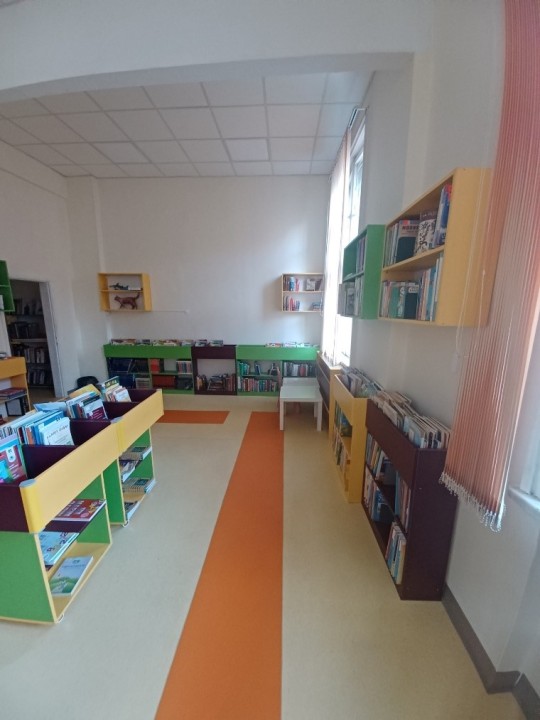
Being a part of an Erasmus+ funded partnership, a key aspect of the trip was in cultural exchange. Participants of the LTTA were encouraged to experience and learn about our host country. Our colleagues in the Bulgarian Library service spoke at length both in formal presentations and casual conversations about their work: the challenges, benefits, and problems that come part and parcel of work in a library system. At the end of our cultural and learning exchange in the beautiful city of Sofia, it was time for the participants of the third ADELE LTTA to say; “au revoir”, “ciao”, “auf wiedersehen” and “see you anon” to each other until the next time!
0 notes
Text
Cork City Libraries Sustainability Blog | Sow…Let’s Grow!
A Time to Plan
I must admit, that although I may come across in these blogs as a seasoned professional (or at least I hope I do!), my garden has not been given the tender love and care it deserved during October. I went out, almost afraid to look last week, for fear that I would be faced with a plant graveyard instead of a garden and yet lo and behold, everything was all right! As my garden exists entirely in pots some had become slightly waterlogged but that was the extend of the damage. Nature is incredibly good at regulating herself and bearing this in mind I turned around and headed back indoors to plan out next year’s logistics – sometimes all the garden needs is to be left alone.
Planning what you’re going to plant in the garden is not for everyone and by no means is it essential, but I find it helps to at least take note of what has grown and thrived in your garden and what struggled or failed to grow at all, to prevent more disappointment a year down the line. For example, muscaria and daffodils thrive in my garden, I planted them once and they have flowered every year since, however I have had less success with tulips, so I don’t think I’ll buy any more of those. Whether you are a seasoned planner or are only just starting out we have plenty of books available to borrow on the subject, such as Your Gardening Year by DK Publishing and The Gardener’s Year Made Easy by Which? to mention but a few.

National Allotments and Community Gardens Conference
At the end of October, I was fortunate enough to attend the first ever National Allotments and Community Gardens conference held in The Glen Sports and Resource Centre. There were people from Tidy Towns committees, Seed Libraries, and enthusiastic gardeners galore, coming from as far as way as Omagh and it was wonderful to see. We were given a tour of The Glen community garden where questions were encouraged and Barry Hickey, who looks after the garden, was more than happy to provide advice. This garden is unique in the fact that it has partnered with the HSE and many of the groups come from HSE-run services like Rehabilitation programmes, Mental Health and Wellbeing for adults and children, and people involved with Probation services. In densely populated areas like these, it is even more important to have access to green spaces and home-grown food as it can make all the difference to the lives of the people who live there.
After lunch, we were brought to the Togher Community Garden where we could wander around and peruse the tea and cake table. Although the garden is relatively new at just two years old, they have wasted no time and the space is impressively filled with raised beds, a green house, a pond, and massive compost bays. This garden focuses on healthy, home-grown food and they have even grown amaranth, a staple food in South and Central America. Many children in the area experience a disconnect from the food on their plates and where it comes from, and this community garden aims to change that. Children from South Lee Educate Together are regular visitors to the garden and the Ballyphehane Men’s Shed also put a lot of work in. It was absolutely wonderful to see so many enthusiastic and committed people giving their time to projects within the community.

If you want to find out more about these community gardens you can find them on Facebook or you can find out more about The Glen at https://glencentre.ie/secondary-schools/ .If neither of these community gardens are close to you why not try one of the other 24 community gardens that are dotted all across Cork City? We here at Hollyhill Library are trying to do our bit by maintaining our seed library and encouraging people to grow their own. Members of the library can ‘borrow’ up to four packets of seeds in the hope that they will save the seeds and bring them back to us the following year. We also take donations of unused seed packets as we strive to be as sustainable as possible.
0 notes
Text
Cork City Libraries Visits Belgium with the ADELE Project!
by Claire Fitzgerald

In the heart of Brussels, library staff from across Europe gathered for the second training session of the Erasmus+ ADELE project (Advancing Digital Empowerment of Libraries in Europe). This event, held in September, served as a melting pot of ideas and discussions on digital innovations in public libraries. The ADELE project is a collaboration between one hundred library staff from one hundred European Libraries to develop an online tool to review the use and provision of digital technologies. Cork City Libraries is a proud participant with five library staff representing five libraries across the city.
As an ADELE-participant, I was delighted to visit the charming and vibrant city of Brussels to participate in presentations, information-sharing, and library visits. Along with my colleagues from Cork, Maria and Tom, I was joined by twenty-four librarians from Ireland, Italy, Bulgaria, Slovenia, Finland, and Austria.
Muntpunt Library, located in the city centre, served as our base hosting many of our activities, including presentations on digital skills and tools. Each participant presented a case study highlighting digital innovations from their library. Tom discussed the broad range of digital services available at Cork City Libraries, while Maria focused on 3D Printing at Bishopstown Library, and I spoke about the Acorn Training Courses Cork City Libraries ran in collaboration with Cork ETB.
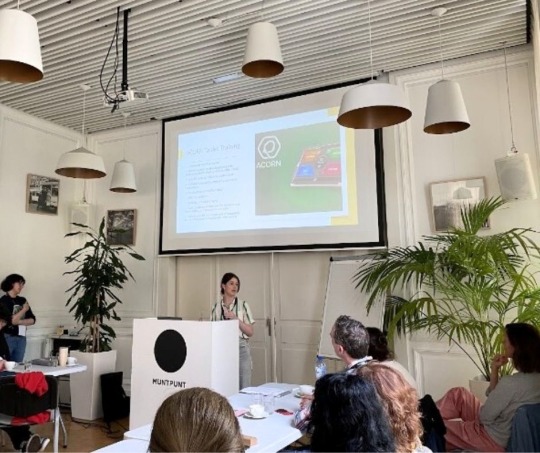
The trip included a visit to the EU Commission and European Parliament. At the EU Commission we heard about initiatives to promote digital skills through informal education. We received a guided tour of the EU Parliament and saw the Parliament hemicycle.

The week wasn't just about the digital realm; we also had the opportunity to visit a selection of Brussels’ libraries. As library staff, we were all particularly excited about this part of the itinerary. We went on a guided tour of Sans Souci Bibliotheek in Elsene, a delightful local library found in the suburbs of the city. At Muntpunt Library, we explored the makerspace De Grid, an entire floor dedicated to creativity with many different types of tools and facilities available to use. One of the highlights was a visit to the Royal Library of Belgium where we explored the library's extensive collection of rare manuscripts and ancient texts. From illuminated medieval manuscripts to early printed books, the library houses a diverse array of historical treasures. While there, we paid a visit to their ‘book tower’; an impressive 17-storey repository housing all Belgian publications.

The ADELE training provided an insight into the ways libraries across Europe continue to adapt to the digital age while maintaining their mission to provide access to information, promote lifelong learning, and serve as focal points for the community.
0 notes
Text
Cork City Libraries Sustainability Blog | Sow…Let’s Grow!
Now that the evenings are drawing in and we breathe a sigh of relief at the lack of flies and midges, spare a thought for the birds and other small mammals who rely on these to feed themselves through the winter. Making a garden that is wildlife friendly is more important than ever during the colder months. Lots of animals like squirrels and mice gather food during summer and autumn to get them through the winter, but birds and foxes must hunt through the winter. If you have somewhere to hang a bird feeder, do please hang one up, or if you have a pile of logs sitting somewhere that you had planned on tidying, why not leave them a couple months longer, the small mammals of Ireland will thank you for it. For more ways you can make your garden a safe haven for wildlife, check out books like Joe’s Expert Gardening Guide: Create Your Own Nature Garden by Joe Swift, available to borrow from your local library!

Houseplants have had a huge resurgence in popularity - gone are the days of the stuffy geranium in your granny’s living room window, everyone from your teenage cousin to the hip librarian has one these days! While the gardener’s to-do list is never finished, the unpredictability of autumn weather and the shrinking hours of day light can force you to retreat indoors whether you want to or not. An ingenious way around this is to bring the garden indoors to you, through the medium of houseplants. Houseplants are certainly a much easier way to dabble your toes in the gardening world, because you don’t even need to have a garden to reap the benefits. I currently have over 40 different houseplants and am quickly running out of space – plants like Tradescantia are so easy to propagate that my one plant has quickly turned into five! We have lots of lovely books on houseplants here in Hollyhill library including Never Put a Cactus in the Bathroom by Emily L. Hay Hinsdale.
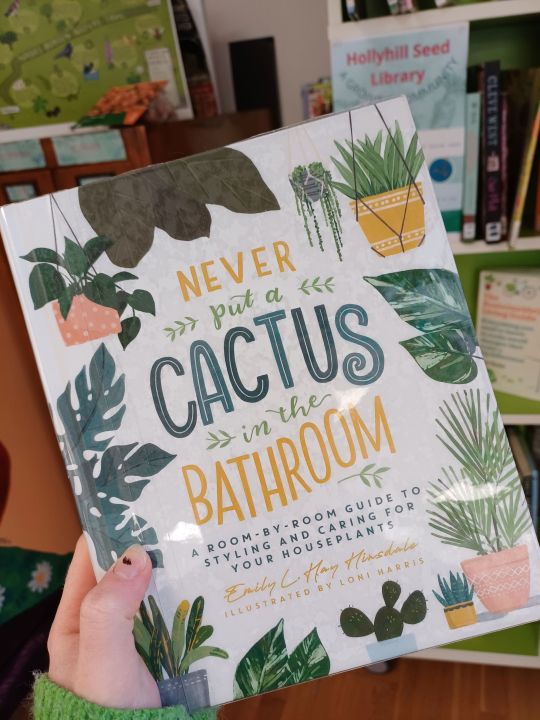
If you do still want to get out into the garden however, there is still plenty to be done.
Spring-flowering bulbs can be planted all the way up until the first frost really, and they come back again and again every year so a worthy investment if you want a colourful garden but don’t have the time to maintain it.
Garlic and onion bulbs can be planted now for a good crop next summer. For garlic try and plant hardneck varieties as they are better suited to our climate. Pop the bulb into the soil pointy end facing up and leaving roughly 15cm between each bulb. Keep weed free and removes the scapes or flowers as they appear as this will direct more nutrients to the growing bulb. Garlic should be ready to harvest once the leaves have turned yellow and withered, usually around next July. For onions, make sure the variety you have are an autumn variety rather than a spring one, as these will not survive the winter. Depending on how big you want your onions plant them in rows with 5 – 10cm between each bulb (the bigger the gap the bigger the onion), with the top of the bulb just poking out above the soil. Keep weed free and all going well, your onions should be ready as early as next May.
All those dead leaves are perfect for the compost heap. Simply scoop them up and pop them in!

As a lovely little treat, I’ve attached a photo of my cosmos flowering this week. I planted these back in May with seeds I had borrowed from the Hollyhill Seed Library and after all the bad weather we’ve had this summer, I had given up hope when August came and went, and they hadn’t flowered. However, I just needed a little patience, because as it turns out August showers sometimes bring September flowers!
0 notes
Text
Cork City Libraries Sustainability Blog | Sow…Let’s Grow!
As the summer draws to a close and the nights grow longer and darker, there is still plenty to be done in the garden as we tidy away the remnants of the summer bounty and prepare for winter.
If you think however, that the dawn of September means the death of the growing season then let me change your mind by outlining four plants, all of which can be sown in September and all of which we have in stock in the Hollyhill Seed Library, that is chicory, coriander, calendula, and phacelia.

We have two types of chicory seeds currently in Hollyhill Library i.e. ‘Palla rosa’ and ‘di Castelfranco’, both of which can be planted from April up until late August/early September. The baby leaves can be used in salads and the fully grown leaves can be used in stir fries.
Coriander is a wonderful herb to have at the ready and can be sown from April all the way through until October. Coriander doesn’t actually like full sun and is partial to bolt (flower prematurely) when exposed to long periods of hot weather so planting seeds at this time of year means that this can be avoided.
Calendula is another wonderful plant to have in the garden. It is an incredibly useful plant and can be used to make tinctures, ointments and washes to treat burns, bruises and cuts. It can be planted from March to May for a floral display in late summer and in September and October for an early flowering. Simply scatter the seeds over some well raked soil and keep moist. Calendula seeds can also be collected and saved for next year, and they will self-seed so no need to replant year after year.
Phacelia, which has wonderful purple flowers, can be sown all the way from March through to September and if you are fortunate enough to have a large garden, can be used as a green manure.
September is also the time of year for planting spring flowering bulbs, such as daffodils, crocus, muscaria, snowdrops, and hyacinths to name but a few. These are well worth planting as they come back again and again and bring swathes of colour to the garden when all around is so grey and miserable. If you have a cottage style garden, throwing the bulbs in the air and planting them where they land, can contribute to a lovely natural feel.

Hollyhill Library hosted a seed saving talk with Ellie Donovan during Heritage Week. Ellie spoke about the importance of saving seeds, not just as a way of saving money, but as a way to preserve Irish heritage varieties for the future, ensuring that the Irish ecosystem remains healthy and full of biodiversity. Some specific seeds that she mentioned during the talk included aquilegia or granny’s bonnet which I’ve mentioned before on this blog, fennel which is a fantastic herb, and I cannot walk by one without snapping a bit off and eating it, Martock beans which I had never heard of, and sweet chestnut.
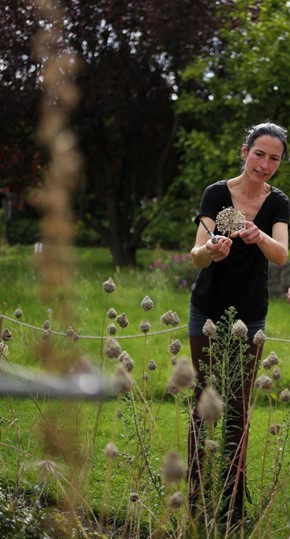
Regardless of what seed you are collecting; the most important thing to do is make sure that they are dry – do not collect on rainy days and do not allow them to get damp while you are storing them as they will become mouldy and unusable.
Ellie kindly allowed us to take some of her saved seeds after her talk and I decided on the Martock beans. What intrigued me was, aside from this being a very old bean variety (there is evidence to suggest that these beans were grown by Neolithic people – 12,000 years ago!) the bean pods grow upwards instead of down. They are also quite a small variety, usually growing around 4ft tall and producing a hefty crop, Ellie said she counted 80 pods on one of her plants. So, I intend to plant these out next February and see what happens. Stay tuned!
1 note
·
View note